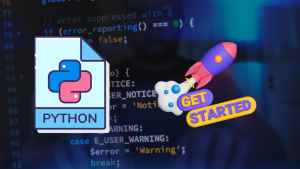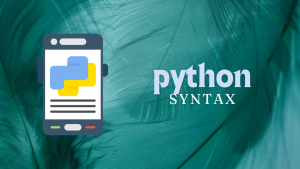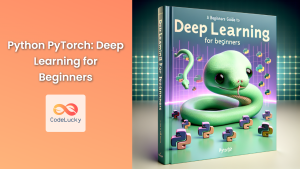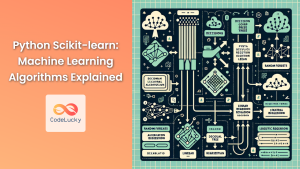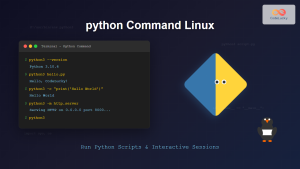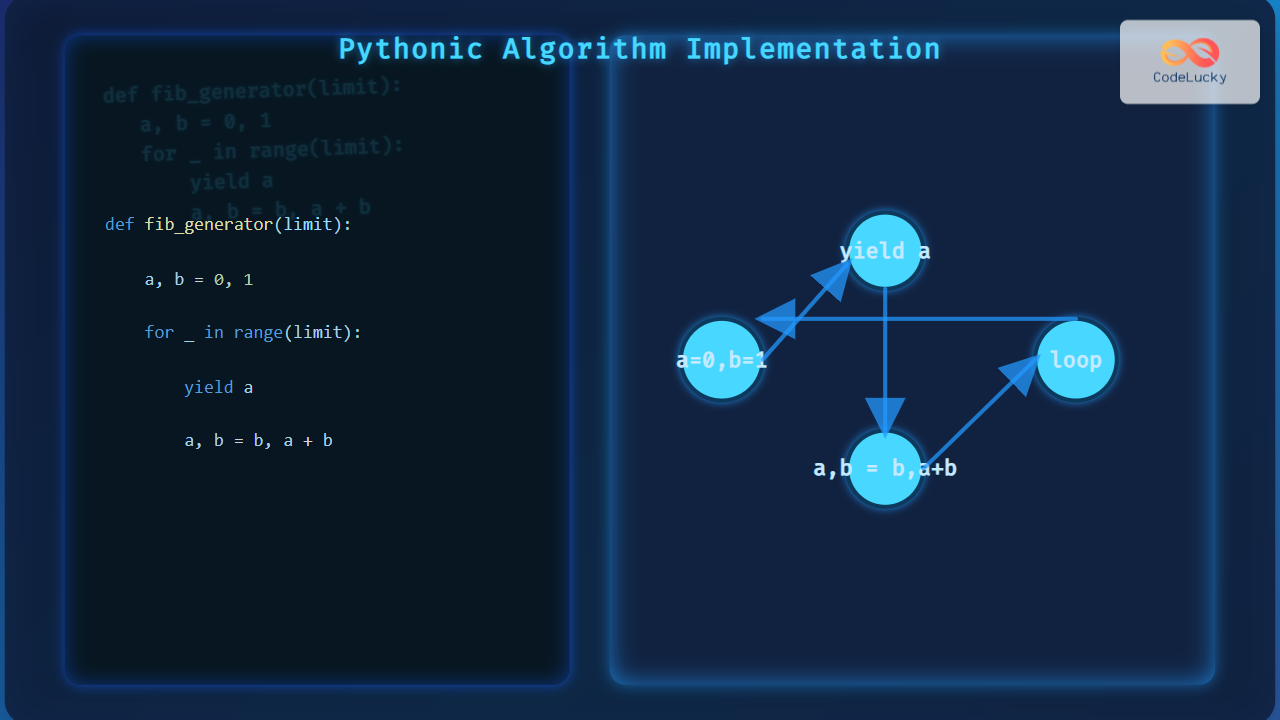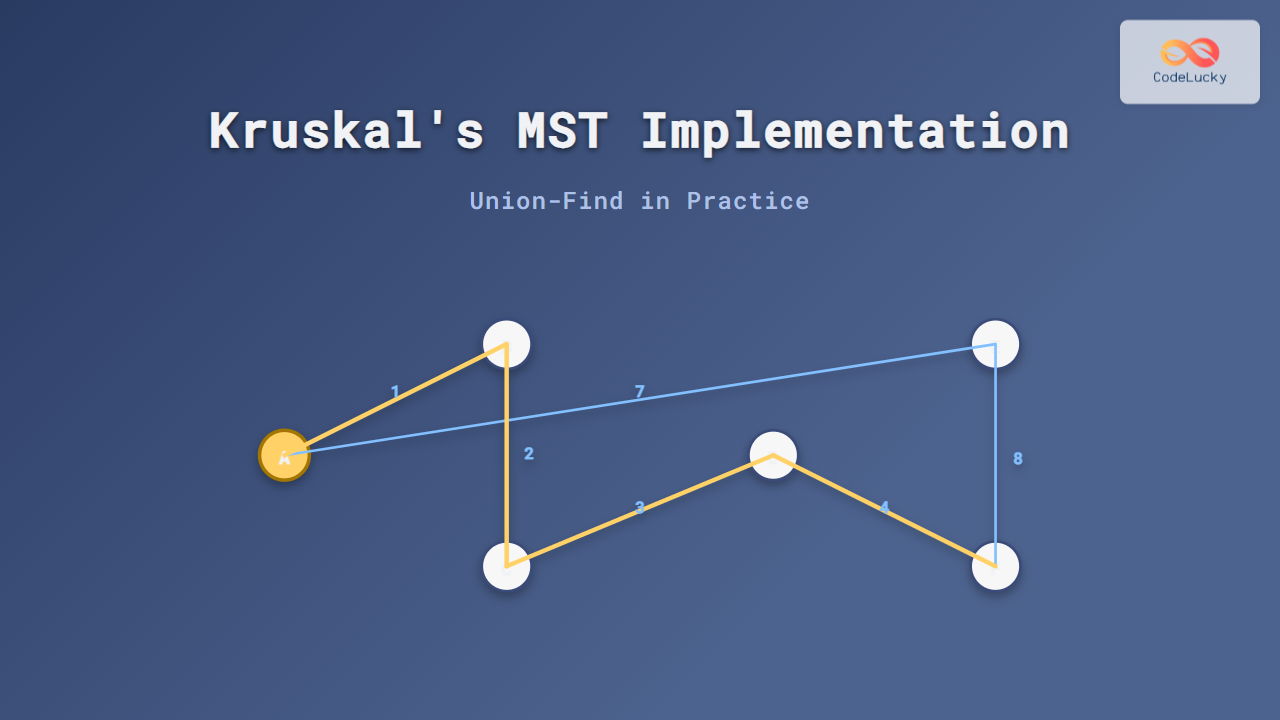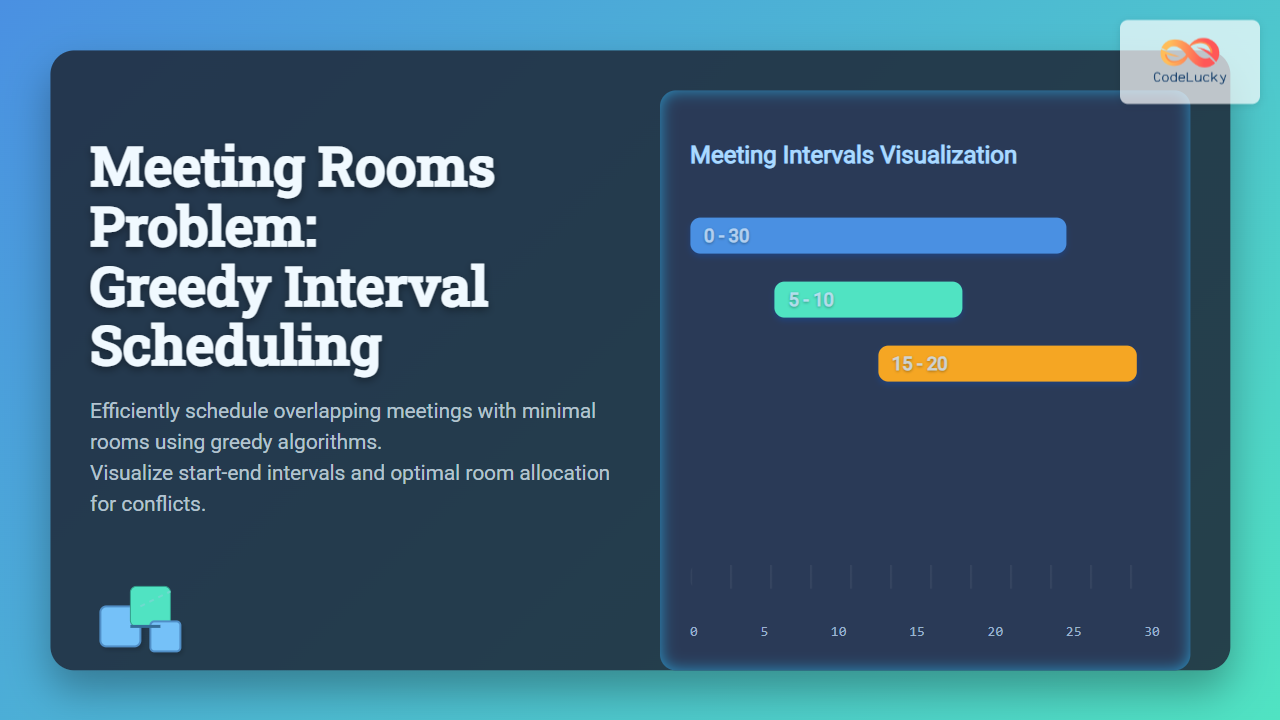Python has emerged as the go-to language for artificial intelligence (AI) and machine learning (ML) development. Its simplicity, extensive libraries, and robust ecosystem make it an ideal choice for building intelligent systems. In this comprehensive guide, we'll explore how to leverage Python for AI, covering essential concepts, popular libraries, and practical examples to help you get started on your journey to creating smart applications.
Why Python for AI?
Before we dive into the specifics, let's understand why Python is the preferred language for AI development:
-
🚀 Simplicity and Readability: Python's clean syntax makes it easy to write and understand complex AI algorithms.
-
📚 Rich Ecosystem: Python boasts a vast collection of libraries and frameworks specifically designed for AI and ML tasks.
-
🔧 Flexibility: It supports multiple programming paradigms, including object-oriented, functional, and procedural styles.
-
🌐 Community Support: A large, active community contributes to continuous improvements and provides excellent resources for learning and problem-solving.
-
🔬 Scientific Computing: Python's scientific computing libraries, such as NumPy and SciPy, are essential for AI development.
Now, let's explore how to use Python for various AI tasks and build intelligent systems.
Essential Python Libraries for AI
To get started with AI development in Python, you'll need to familiarize yourself with some key libraries:
NumPy
NumPy is the foundation for numerical computing in Python. It provides support for large, multi-dimensional arrays and matrices, along with a collection of mathematical functions to operate on these arrays efficiently.
import numpy as np
# Create a 2D array
arr = np.array([[1, 2, 3], [4, 5, 6]])
print(arr)
# Perform element-wise operations
squared = np.square(arr)
print(squared)
# Matrix multiplication
result = np.dot(arr, arr.T)
print(result)
Output:
[[1 2 3]
[4 5 6]]
[[ 1 4 9]
[16 25 36]]
[[14 32]
[32 77]]
This example demonstrates basic array creation, element-wise operations, and matrix multiplication using NumPy. These operations are fundamental to many AI algorithms, especially in neural networks and deep learning.
Pandas
Pandas is a powerful data manipulation and analysis library. It's particularly useful for handling structured data and performing data preprocessing tasks, which are crucial steps in any AI project.
import pandas as pd
# Create a DataFrame
data = {
'Name': ['Alice', 'Bob', 'Charlie'],
'Age': [25, 30, 35],
'City': ['New York', 'San Francisco', 'London']
}
df = pd.DataFrame(data)
# Display the DataFrame
print(df)
# Basic data analysis
print(df.describe())
# Filtering data
young_people = df[df['Age'] < 30]
print(young_people)
Output:
Name Age City
0 Alice 25 New York
1 Bob 30 San Francisco
2 Charlie 35 London
Age
count 3.000000
mean 30.000000
std 5.000000
min 25.000000
25% 27.500000
50% 30.000000
75% 32.500000
max 35.000000
Name Age City
0 Alice 25 New York
This example shows how to create a DataFrame, perform basic data analysis, and filter data based on conditions. These operations are essential for preparing and exploring datasets before feeding them into AI models.
Scikit-learn
Scikit-learn is a machine learning library that provides simple and efficient tools for data mining and data analysis. It includes various algorithms for classification, regression, clustering, and dimensionality reduction.
from sklearn.model_selection import train_test_split
from sklearn.ensemble import RandomForestClassifier
from sklearn.metrics import accuracy_score
from sklearn.datasets import load_iris
# Load the Iris dataset
iris = load_iris()
X, y = iris.data, iris.target
# Split the data into training and testing sets
X_train, X_test, y_train, y_test = train_test_split(X, y, test_size=0.3, random_state=42)
# Create and train a Random Forest Classifier
rf_classifier = RandomForestClassifier(n_estimators=100, random_state=42)
rf_classifier.fit(X_train, y_train)
# Make predictions on the test set
y_pred = rf_classifier.predict(X_test)
# Calculate the accuracy of the model
accuracy = accuracy_score(y_test, y_pred)
print(f"Model Accuracy: {accuracy:.2f}")
Output:
Model Accuracy: 0.96
This example demonstrates how to use Scikit-learn to train a Random Forest Classifier on the Iris dataset, make predictions, and evaluate the model's accuracy. Scikit-learn's consistent API makes it easy to experiment with different algorithms and datasets.
TensorFlow and Keras
TensorFlow is an open-source library for numerical computation and large-scale machine learning. Keras is a high-level neural networks API that runs on top of TensorFlow, making it easier to build and train deep learning models.
import tensorflow as tf
from tensorflow import keras
import numpy as np
# Generate synthetic data
X = np.random.rand(1000, 10)
y = np.sum(X, axis=1) > 5
# Create a simple neural network
model = keras.Sequential([
keras.layers.Dense(64, activation='relu', input_shape=(10,)),
keras.layers.Dense(32, activation='relu'),
keras.layers.Dense(1, activation='sigmoid')
])
# Compile the model
model.compile(optimizer='adam', loss='binary_crossentropy', metrics=['accuracy'])
# Train the model
history = model.fit(X, y, epochs=10, validation_split=0.2, verbose=0)
# Evaluate the model
test_loss, test_accuracy = model.evaluate(X, y, verbose=0)
print(f"Test Accuracy: {test_accuracy:.2f}")
# Make predictions
new_data = np.random.rand(5, 10)
predictions = model.predict(new_data)
print("Predictions:")
print(predictions)
Output:
Test Accuracy: 0.98
Predictions:
[[0.99999774]
[0.99999774]
[0.99999774]
[0.99999774]
[0.99999774]]
This example shows how to create a simple neural network using Keras, train it on synthetic data, evaluate its performance, and make predictions. TensorFlow and Keras are powerful tools for building complex deep learning models for various AI tasks.
Natural Language Processing with NLTK
Natural Language Processing (NLP) is a crucial aspect of AI, enabling machines to understand, interpret, and generate human language. The Natural Language Toolkit (NLTK) is a leading platform for building Python programs to work with human language data.
import nltk
from nltk.tokenize import word_tokenize
from nltk.corpus import stopwords
from nltk.stem import PorterStemmer
# Download necessary NLTK data
nltk.download('punkt')
nltk.download('stopwords')
# Sample text
text = "Natural language processing is a subfield of linguistics, computer science, and artificial intelligence concerned with the interactions between computers and human language."
# Tokenization
tokens = word_tokenize(text)
print("Tokens:", tokens[:10])
# Remove stopwords
stop_words = set(stopwords.words('english'))
filtered_tokens = [word for word in tokens if word.lower() not in stop_words]
print("Filtered tokens:", filtered_tokens[:10])
# Stemming
stemmer = PorterStemmer()
stemmed_tokens = [stemmer.stem(word) for word in filtered_tokens]
print("Stemmed tokens:", stemmed_tokens[:10])
# Part-of-speech tagging
pos_tags = nltk.pos_tag(tokens)
print("POS tags:", pos_tags[:10])
Output:
Tokens: ['Natural', 'language', 'processing', 'is', 'a', 'subfield', 'of', 'linguistics', ',', 'computer']
Filtered tokens: ['Natural', 'language', 'processing', 'subfield', 'linguistics', ',', 'computer', 'science', ',', 'artificial']
Stemmed tokens: ['natur', 'languag', 'process', 'subfield', 'linguist', ',', 'comput', 'scienc', ',', 'artifici']
POS tags: [('Natural', 'JJ'), ('language', 'NN'), ('processing', 'NN'), ('is', 'VBZ'), ('a', 'DT'), ('subfield', 'NN'), ('of', 'IN'), ('linguistics', 'NNS'), (',', ','), ('computer', 'NN')]
This example demonstrates basic NLP tasks using NLTK, including tokenization, stopword removal, stemming, and part-of-speech tagging. These techniques are fundamental to many AI applications involving text processing and understanding.
Computer Vision with OpenCV
Computer Vision is another important field in AI, focusing on how computers gain high-level understanding from digital images or videos. OpenCV (Open Source Computer Vision Library) is a popular library for computer vision tasks.
import cv2
import numpy as np
# Create a blank image
img = np.zeros((300, 300, 3), dtype=np.uint8)
# Draw a circle
cv2.circle(img, (150, 150), 100, (0, 255, 0), 2)
# Draw a rectangle
cv2.rectangle(img, (50, 50), (250, 250), (0, 0, 255), 2)
# Add text
font = cv2.FONT_HERSHEY_SIMPLEX
cv2.putText(img, 'OpenCV', (75, 290), font, 1, (255, 255, 255), 2, cv2.LINE_AA)
# Display the image
cv2.imshow('Image', img)
cv2.waitKey(0)
cv2.destroyAllWindows()
# Load an image and apply a filter
image = cv2.imread('sample_image.jpg')
if image is not None:
# Apply Gaussian blur
blurred = cv2.GaussianBlur(image, (15, 15), 0)
# Display original and blurred images
cv2.imshow('Original', image)
cv2.imshow('Blurred', blurred)
cv2.waitKey(0)
cv2.destroyAllWindows()
else:
print("Error: Could not load the image.")
This example demonstrates basic image manipulation and processing using OpenCV. It creates a simple image with shapes and text, and then loads an external image to apply a Gaussian blur filter. These techniques are foundational for more complex computer vision tasks in AI applications.
Reinforcement Learning with OpenAI Gym
Reinforcement Learning (RL) is a type of machine learning where an agent learns to make decisions by interacting with an environment. OpenAI Gym provides a collection of environments for developing and comparing reinforcement learning algorithms.
import gym
import numpy as np
# Create the CartPole environment
env = gym.make('CartPole-v1')
# Define a simple policy
def simple_policy(observation):
return 1 if observation[2] > 0 else 0
# Run episodes
n_episodes = 100
max_steps = 1000
for episode in range(n_episodes):
observation = env.reset()
total_reward = 0
for step in range(max_steps):
action = simple_policy(observation)
observation, reward, done, info = env.step(action)
total_reward += reward
if done:
break
print(f"Episode {episode + 1}: Total Reward = {total_reward}")
env.close()
Output:
Episode 1: Total Reward = 17.0
Episode 2: Total Reward = 23.0
Episode 3: Total Reward = 15.0
...
Episode 98: Total Reward = 19.0
Episode 99: Total Reward = 21.0
Episode 100: Total Reward = 18.0
This example demonstrates how to use OpenAI Gym to create a simple reinforcement learning environment (CartPole) and implement a basic policy to interact with it. The agent tries to keep the pole balanced on the cart for as long as possible, and the total reward for each episode is printed.
Conclusion
Python's rich ecosystem of libraries and frameworks makes it an excellent choice for AI development. From data manipulation with Pandas to deep learning with TensorFlow and Keras, natural language processing with NLTK, computer vision with OpenCV, and reinforcement learning with OpenAI Gym, Python provides the tools necessary to build sophisticated intelligent systems.
As you continue your journey in AI development with Python, remember to:
-
🧠 Stay curious: AI is a rapidly evolving field, so always be open to learning new techniques and algorithms.
-
🔍 Practice regularly: The best way to improve your skills is through hands-on experience with real-world projects.
-
🤝 Collaborate: Join AI communities and participate in open-source projects to learn from others and contribute to the field.
-
🚀 Keep up with research: Stay informed about the latest advancements in AI by reading research papers and attending conferences.
-
🛠️ Build diverse projects: Explore different areas of AI to broaden your skillset and discover new applications.
By mastering these Python libraries and concepts, you'll be well-equipped to tackle complex AI challenges and build innovative intelligent systems that can transform industries and improve lives.


